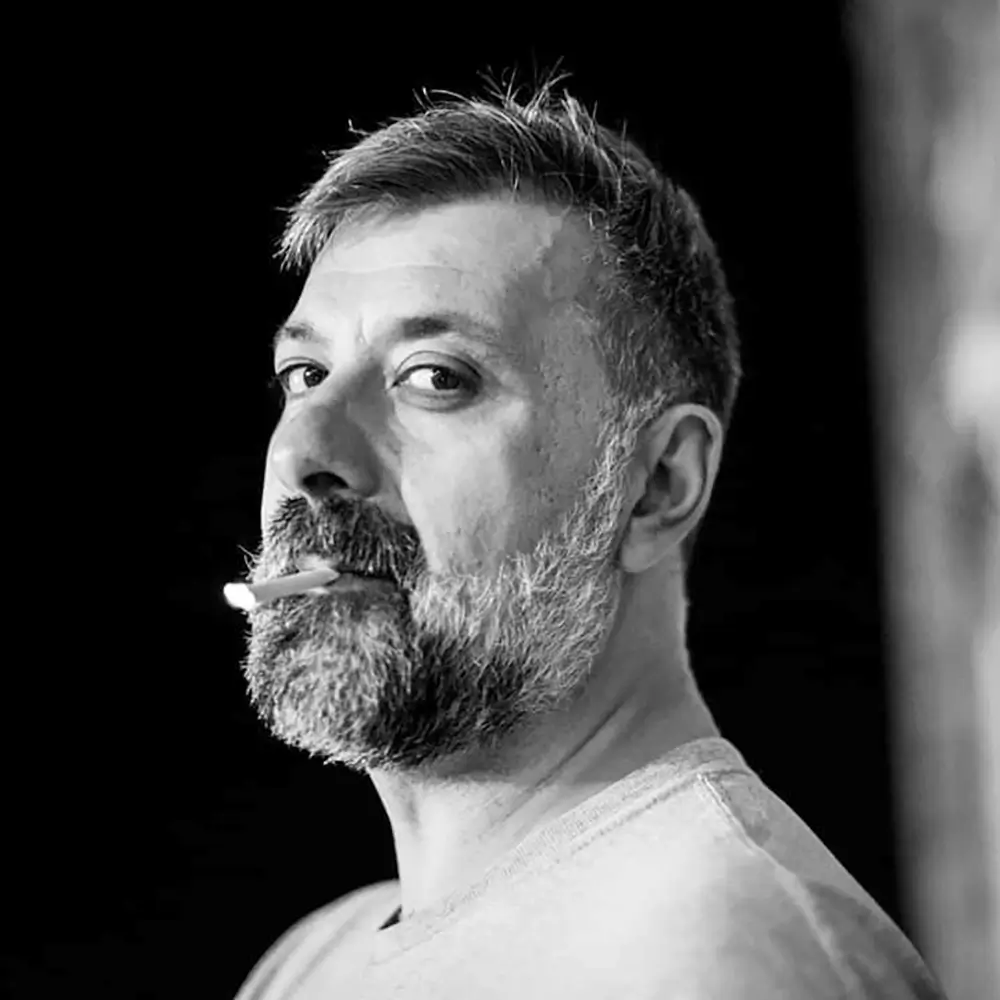Umberto Romagnoli was born in Rome in 1970; in 1994 he attended the European Institute of Design, where he followed photography courses for two years. In 1996 he received a special mention from the jury of the Europe: Crossing Borders competition organized by the European Cultural Foundation in Amsterdam for a work inspired by 100 years of Cinema. Since 2002 he has worked as a photographer, assistant and printer in the studio of Claudio Abate, the "art photographer", eyewitness of the artistic ferment and avant-garde from the 1960s onwards, where he deals with the organization and management of the archive photography and studio. Always interested in the cinematographic medium, often a source of inspiration for his work, in 2008 he made the short film War Box and in 2010 Spiriti del Lago. In the following years he founded the Mister Freedom-Brigata Cinematica, an association that supports and promotes visual culture and cinematographic in all its forms. Parallel to his photographic activity, he organizes and takes care of film clubs, film festivals and themed events such as: Posto Unico, Pape Satàn, Sdrive-In, Arena-Dentro La Storia and Street Cinema.
Statement:
I think that through a broad vision of photography I try to explore both the intimate and the analytical, creating a dialogue between the human essence and the visual representation, with this approach I try to combine originality and critical reflection. As for the interior and ancestral universe, I have always focused on subjects that reflect intimacy and human nature, from female nudes, to the elements to portraits used in a symbolic or metaphorical way, to still lifes of various inanimate objects that can hide deeper meanings. As for the analysis of the image and the fictional universe, I have worked on the understanding and analysis of the photographic and cinematographic image, examining how the visual image communicates, influencing the viewer, its authenticity and truth, asking myself questions about the nature of the image: how authentic is it? how manipulated is it? This can lead to reflections on perception and reality, passing through works of pure fiction, creating images that tell imaginary stories.
